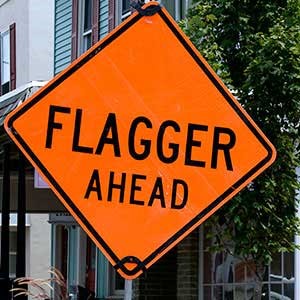Ensure workers' safety in high-traffic work zones

Construction, demolition, emergency response, utility workers, and other employees working in traffic areas could be at the risk of being struck by moving vehicles. According to the Occupational Safety and Health Administration (OSHA), a work zone is set up to move traffic in an approved direction and is identified by barrels, barriers, cones, and signs to protect workers against potential accidents.
A traffic control plan is required by OSHA and helps manage the movement of vehicles in high-traffic work zones. Drivers, pedestrians, and workers on foot must be able to identify these areas and understand the safest routes to follow. Officials with local, state, or federal governments determine the best way to temporarily control traffic for pedestrians and motorists and the internal traffic plan within the worksite, is completed by the construction project manager. In areas where multiple projects are being completed, managers can use communication systems to coordinate routes and help improve workplace safety.
Highway signs provide information about speed limits and work zones to assist drivers. Directive signs such as: Evacuation Route, Do Not Enter, Reduced Speed Ahead, Road Closed, and No Outlet can help motorists identify designated traffic paths.
Traffic management devices, message boards, and signals guide drivers along paths away from where work is being performed. Traffic safety supplies including barrels, barricades, cones, and delineator posts should also be set up inside work zones to protect workers. Employers can use collapsible barriers, concrete, crash cushions, sand, truckmounted attenuators, and water to help prevent motorists from entering work zones.
Temporary traffic control measures such as flagging require employees to be highly visible. Flaggers should wear hi-vis traffic safety products with reflective material that makes workers visible from at least 1,000 feet in all directions. Warn drivers in advance with signs that flaggers are ahead.
Flagger stations require adequate lighting. In areas where lighting is not sufficient, chemical lighting or flares can be used. Consider glare that could affect motorists and workers and control or eliminate the problem. Training is crucial for flaggers, and these workers should be trained or certified on proper signaling. Recognize "blind spots" for vehicles on site and be aware of factors that could impact daytime and nighttime projects.
Reduce worker risk at high-traffic worksites with a traffic control plan that includes signs, traffic control devices, work zone protections, flagging, and lighting.



